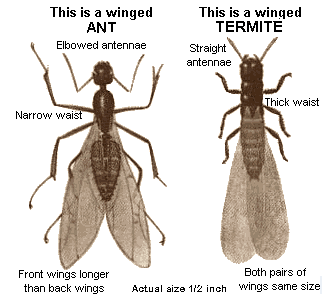Termite Species That Have Been Found Mysteriously Outside Of Their Habitat Range
Humans may be situated at the highest level of the food chain, but when it comes to sheer numbers, insects dominate the earth. Insects are the most species-rich animals in the world. So far, nearly one million different insect species have been documented by scientists. Amazingly, this seemingly high number does not come close to accounting for every single insect species existing on the planet today. Some experts estimate that as many as thirty million different insect species exist on earth. Considering the astounding amount of insects currently existing, it is no wonder why certain insect species are sometimes found far away from their natural habitats. The dramatic increase in global travel that has occured over the last few decades has resulted in a wider global distribution of insect species. These days, an insect that is native to China can easily wind up at some shipping port in Florida. It is more than likely that numerous invasive and benign insects have yet to be discovered within certain regions where they are not native. Since invasive insects are harmful to the environment, it usually does not take long before their presence is discovered. On the other hand, non-native and benign insects can remain undiscovered in non-native environments for long periods of time since they do not harm foreign ecosystems. In just the past decade, two different termite species have been found dwelling in regions of America that are far removed from their native habitats.
Back in 2012, American researchers discovered an entirely new species of subterranean termite on Sapelo Island, Georgia. This new species, Reticulitermes nelsonae, is the fifth Reticulitermes species to be found on American soil. Although termites of the Reticulitermes genus are quite similar in appearance, genetic evidence confirms that Reticulitermes nelsonae is its very own species. The R. nelsonae has been found in a few different coastal regions in the southeast, but they are most widely distributed within Sapelo Island, which sees a high amount of maritime traffic. It is not yet known if this new species is native to the US, or if it simply hitched a boat ride from another region. In the past, researchers may have confused this new species with their similar looking Reticulitermes relatives. Perhaps more surprising is the arid-land termite that was discovered in Wisconsin. Wisconsin is a strange place to find a termite species that is specialized for surviving in dry and arid regions. It had long been assumed that eastern subterranean termites were the only termites that existed within the state of Wisconsin, but researchers discovered an entire colony of arid-land termites within a sunny prairie located within the state. Unlike eastern subterranean termites, arid-land termites do not require high moisture levels, which is probably why they were found inhabiting a sunny prairie. Other arid-land termite colonies have been found as far north as Iowa and Idaho, suggesting that this species may have migrated from arid regions in the southwest.
Do you think that humans inadvertently relocate termite species to new regions in America where they are not native?






